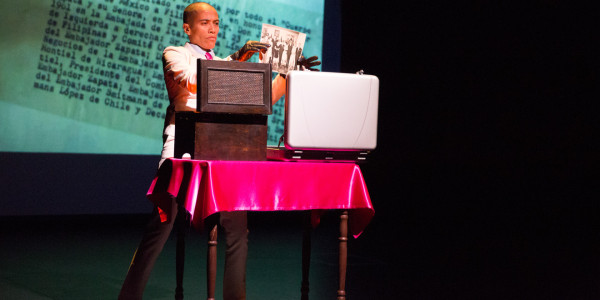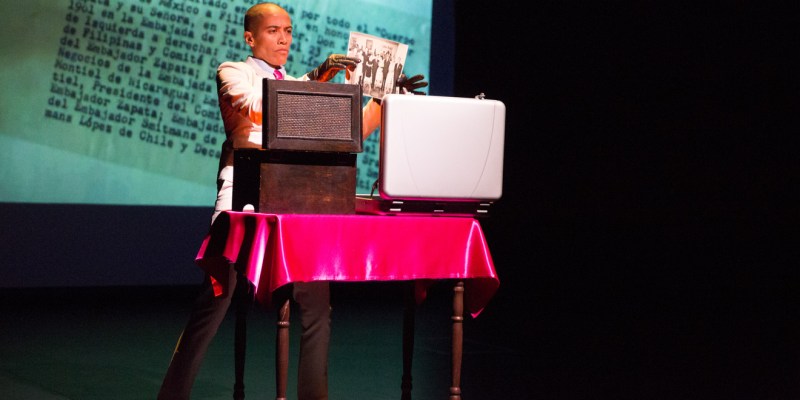
How strong are the ties to our distant relatives, even the ones we haven’t met? How relevant are the affairs of other countries to our lives? These are only two of the questions that Gigi Otálvaro-Hormillosa raised in her original production, “Intertwining Roots,” showcased in Nitery Theater last weekend. Distant yet thought-provoking, Otálvaro-Hormillosa’s avant-garde dance piece didn’t necessarily answer these questions; rather, it provided a means of thinking about them that thrilled the senses.
In “Intertwining Roots,” Otálvaro-Hormillosa recounts her quest to reconnect with her grandfather, Juan, who worked as a Filipino diplomat under the Perón regime in Argentina and died only a month prior to Otálvaro-Hormillosa’s birth. Traveling to Buenos Aires, Argentina, she met with current officials and scoured through Argentinian archives, looking for records pertaining to him. It is here that she encountered the Abuelas (Grandmothers) de Plaza de Mayo. Founded in the tumult of the Dirty War, this activist group aims to uncover what happened to the over 30,000 dissidents — and their babies, born in captivity — who disappeared during the military dictatorship of 1976 to 1983. The overlap between her search and theirs becomes clear. She was seeking to reconnect with a grandfather, who — though they had never met — she was drawn to out of familial relation. Similarly, the Abuelas were searching for the displaced babies of their presumably deceased loved ones — babies whom they had never met either.
At the conclusion of her piece, Otálvaro-Hormillosa addresses a farewell letter to her grandfather, which she narrated with a distanced, monotone inflection, akin to the voice of Siri. Her dispassionate tone was emblematic of the production’s larger approach: Instead of striving to provoke a visceral response from her audience, Otálvaro-Hormillosa, inspired reflection. Her detached style impelled us to call to mind those with whom we have no physical connection.
Otálvaro-Hormillosa’s unconventional aesthetic somewhat overshadows her narrative, however. Bombarding her audience with a sensory landscape, Otálvaro-Hormillosa performance was more of a stylized dance piece than anything else.
The soundscape, compiled with the help of David Molina and various other artists, was startling in its range and scope. Echoing the sentiment of Otálvaro-Hormillosa’s movements, the hectic melody of Child View’s “After Image” contrasted starkly with the soothing, accordion-driven tune of Riccardo Tessi’s “La Marcia Dei Criceti” that followed. These dramatic shifts helped frame the audience’s understanding of the coming section, which often differed in tone from the last.
Otálvaro-Hormillosa’s usage of light was the strongest element in this sensory landscape. Flushing the stage in squares of red and shades of blue, the lighting added gravitas to the already solemn production. Additionally, the lighting allowed Otálvaro-Hormillosa to experiment with shadow play, which is characterized by the projecting of an actor’s shadow on a screen or wall. One such compelling usage occurred while she discussed the dumping of Argentine subversives’ bodies into the ocean: She intimated — via the shadow of her body — the image of a corpse sinking in water. Other times, she cast shadows on the floor with her hands. These shadows gained life as she repeatedly thrust her hands out, then drew them back into her body, seemingly reaching for something.
This expert lighting served to highlight Otálvaro-Hormillosa’s dancing, which, though not technically demanding, mirrored her narrative nicely. Take, for instance, the sequence in which she mimicked her business-like grandfather, strutting about the stage with a comically puffed-up self-importance; meanwhile, a voiced recording related to the audience how Juan had arrived in Buenos Aires as a Filipino emissary to the Argentine government. Otálvaro-Hormillosa was generally more subdued in her movements; in one such sequence, she manipulated her body to imitate the look of a skeleton, invoking a somber mood.
Meanwhile, a prerecorded video, which documented Otálvaro-Hormillosa’s findings on her grandfather, shined on a projector screen in the back. Though she interacted with it sporadically, I found the video to be not so much relevant to the art as it was to filling in the gaps of her narrative.
Ultimately, what made Otálvaro-Hormillosa’s “Intertwining Roots” compelling was not the way in which the quest for her grandfather intertwined with the Abuela’s search for their grandsons and daughters. It was the way in which the Otálvaro-Hormillosa’s myriad media interacted and intertwined with each other to create a stunning, distanced aesthetic that challenge the audience to think about the bond of family.
Contact Ian Anstee at ianstee5 ‘at’ stanford.edu.
